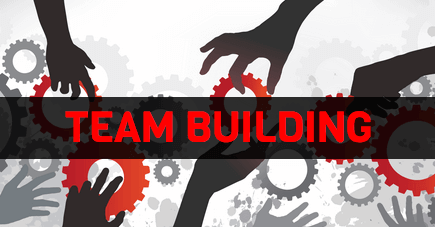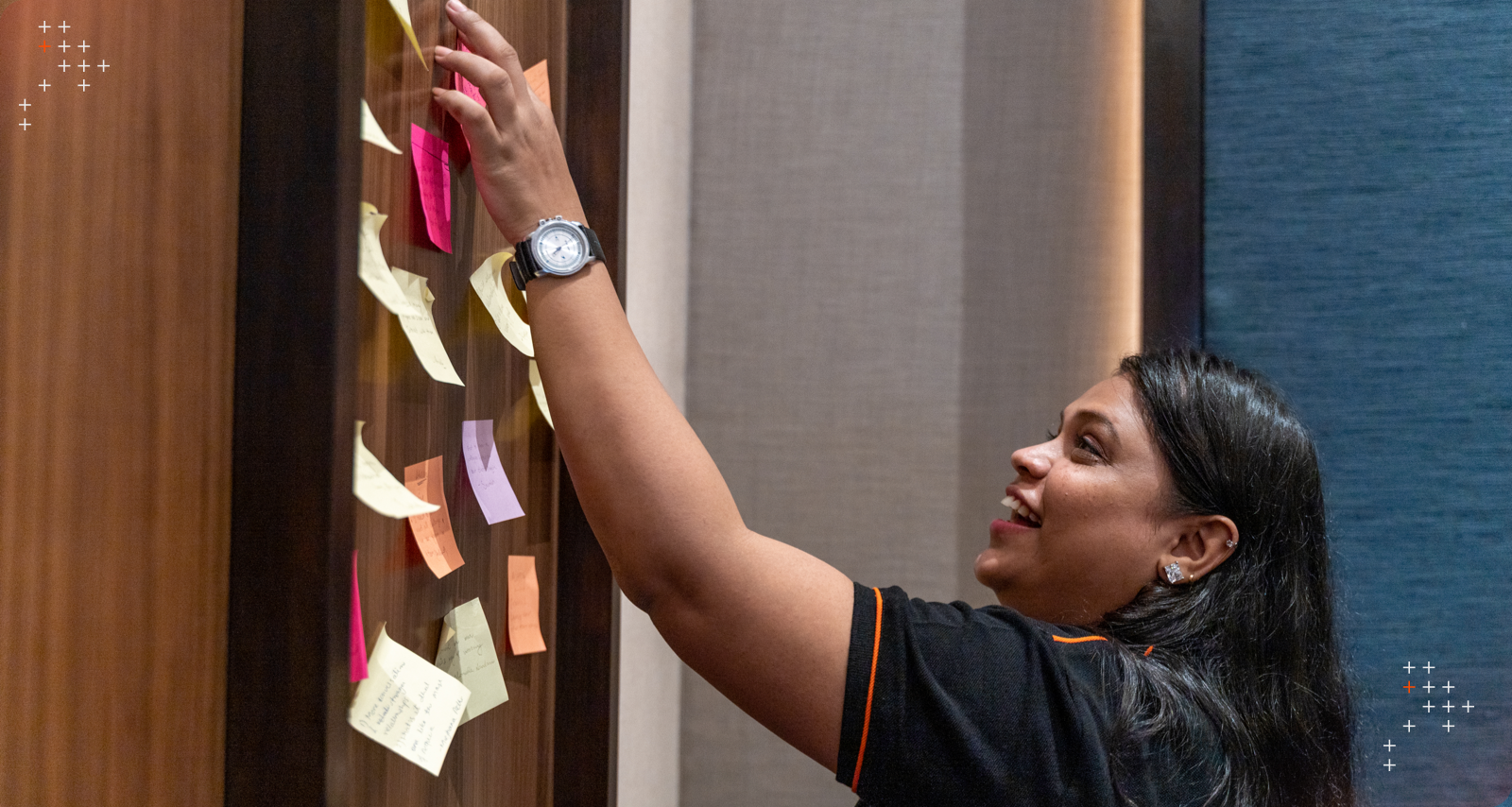Introduction
Distributed team building shouldn't be lame particularly since a remote work culture can be weird enough. Some remote employees work together for years without ever interacting in person. Virtual teams and their dynamics are utterly bizarre to many but are becoming less so.
Meeting face-to-face isn’t new or strange for Axelerant. And as new team members are welcomed aboard, distributed team building activities get things going. We experience get-togethers throughout the year—conventions, camps, retreats, birthday meetups—to offset the distance between us.
Building up a distributed team’s dynamic isn’t always so easy. And yes, some activities can make things awkward. Doing them right takes some serious thought, and a constant reminder:
When you invest in building up your team, your goals should be synergy, fostering togetherness, and fun.
If you lose sight of fun, things will get lame fast. Loosen up. We should all take our work seriously, but we should never take ourselves too seriously. You take people who are serious about work and show them, by example, how to take themselves lightly.
5 Distributed Team Building Tips (That Worked For Us)
- Starting Things Off
- Setting The Tempo
- Testing Things Out
- Letting Silliness Take Over
- Laughing Even Harder
During our January retreat, team building activities became a central theme. 35 people were able to attend, and many of them had never met one other offline (despite working together daily) for a couple of years.
1. Starting Things Off; The Quiz
We did a simple pub style quiz with random questions from different categories: general knowledge, riddles, film, food, and so on. This easy going distributed team building activity is a great option for beginnings. The variety of topics make people comfortable and enables sharing.
Through this first activity, it was good to see how well people included quieter coworkers. It was the first time many of us “saw” one another work together as a team without our laptops.
The competitiveness between the teams was healthy and fun. Everyone involved took it seriously and showed a genuine desire to engage. Engagement helped us bond quickly.
2. Setting The Tempo; The If Questions
We brought forward a random list of icebreaker and what if questions. We took each question and put it on a strip of paper, threw them in a hat, and passed it around. There were extras at the end, and we didn’t have to ask people to take up more.
When we were planning this game, we had to consider many factors.
As an example, this was the first time many of us were meeting face to face, and we’re a diverse team. It’s important to take cultural differences into consideration when writing the questions.
Cultural differences are why throughout team building exercises; organizers need to keep things light-hearted and upbeat. This environment helps prevent any offense or embarrassment while inviting team members out of their comfort zones
The what if questions game helped set our tone of openness. After this, organizers felt more confident that the rest of the games would flow well.
3. Testing Things Out; Counting to 10
So what we did next was sit in a group and try to count from 1 to 10 without multiple people calling out the same number at the same time. The hesitation, size of the group and the mix of social cues made interrupting ok and mutual frustrations fun. We added a twist by doing it blindfolded.
Because it’s simple and relatively fast (with really easy rules), this is an excellent activity for a session or as a quick break from a session. Counting to 10 a great exercise to achieve a calm environment because it tasks the team to get in sync and stay fluid.
4. Letting Silliness Take Over; Bang! Bang!
Here's an excellent game to play a quite a few times. It’s a great way to learn names and get a good laugh. It’s also nice to pivot to when there’s an unexpected break.
Here's how Bang! Bang! goes. Everyone stands in a circle with hands ready to shoot and follows these five steps:
- It is a must to know the name of the person next to them, on both sides. So either go round calling the names or tell people to ask each other.
- A name is called out (the organizer starts) and that person has to duck down to let the people on either side shoot by calling out bang! bang!
- The first to shoot wins and the other person sits out.
- If the person whose name is called doesn’t duck, they’re done.
- The person who leaves the game is the next one to call the name and so the game goes on.
When there are just two people left, they can have a duel, or during the following session the last person out can call out now! randomly to see who reacts quickest to shoot.
5. Laughing Even Harder; Pass The Parcel
You can use newspaper as wrapping paper and put in little prizes of sweets or small gifts. On every layer that was unwrapped, there were different tasks to do and sometimes a little reward too.
The tasks can be anything from standing on your head, showing off your best martial arts moves to singing happy birthday in a funny way to someone, or to scream as loud as you possibly can—that's always fun. Only play this game if your group shows they can be pushed out of their comfort zone.
10 Distributed Team Building Takeaways
These are the top takeaways from doing these activities:
1. Don’t worry if an activity either runs long or short
It’s essential to flow with how things are going and not push to do more and more. If a game is going well, then keep it going, else move on.
2. Adapt to what the group wants
If you’re rigid, and you’re not sensitive to what team wants, no one will have any fun. If this is the case, you’ll never establish bonds.
3. Know your people
Choose games without contact unless you are sure it will be right for everybody. Don’t be afraid to ask people directly one-to-one if you think they might have an issue.
4. Have a backup plan
If someone isn’t comfortable, have some alternatives prepared or just smoothly move on. Having a plan B and C is always a good idea.
5. Switch up your groups
If you are doing group activities then shuffling the groups each time is a must.
6. Don't lose yourself in the details
Break some of the rules and don't get manic about the little things. One of the worst things you can do is obsess over parameters; these activities should be natural.
7. Don't do too many in a row
Even though these can be super fun to do back-to-back, know when to stop or to call for a break. Keep it to only two or three activities at a time. Say, 30-minutes at most overall for each ice-breaker session.
8. Provide munchies
If doable, provide snacks. Food and drink bring people together, and there's no better way to put people at ease than over a coffee bar.
9. Take pictures subtly
If some aren't comfortable with this, don't take pictures of them. Making this subtle is important; the focus is distributed team building, not a photo shoot. But regardless, don't miss out on an opportunity to snap some good ones.
10. Ask for feedback
Don't assume the activity was great—ask people. Foster candidness, and don't be offended if an event didn't go as well as you intended.
For some, social anxiety and hesitation can hold the ice-breaker process up. But if your team builders take the right approach, this won’t last long. Share some of your experiences with distributed team building below!
This article was originally published on October 20, 2015. It has since been updated.
Axelerant Editorial Team
The Axelerant Editorial Team collaborates to uncover valuable insights from within (and outside) the organization and bring them to our readers.



 We respect your privacy. Your information is safe.
We respect your privacy. Your information is safe.


